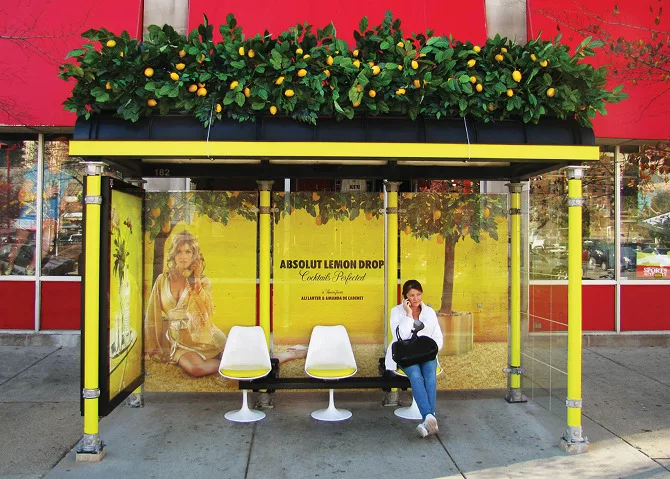The Resurgence of Guerrilla Marketing and Its Influence on Digital Marketing

In the fast-paced, ever-evolving landscape of digital marketing, traditional strategies are constantly being revisited and revamped to capture the attention of increasingly discerning audiences. One such strategy making a notable comeback is guerrilla marketing. Known for its unconventional and often low-cost tactics, guerrilla marketing is once again gaining traction, blending seamlessly with digital marketing efforts to create impactful campaigns. As a digital marketer, understanding this resurgence and its implications is crucial for staying ahead of the curve.
What is Guerrilla Marketing?
Guerrilla marketing, a term coined by Jay Conrad Levinson in the 1980s, refers to marketing strategies that use unconventional methods to achieve maximum exposure with minimal resources. These tactics often involve surprise, creativity, and a significant level of interaction with the target audience. Examples include flash mobs, public stunts, viral social media challenges, and other forms of experiential marketing.
Why is Guerrilla Marketing Making a Comeback?
Several factors contribute to the resurgence of guerrilla marketing in the digital age:
Saturation of Digital Advertising: With the proliferation of digital ads, consumers are becoming increasingly adept at ignoring traditional online advertisements. Guerrilla marketing cuts through the noise by offering unique, memorable experiences that capture attention in a more personal and engaging way.
Cost-Effectiveness: In an era where digital ad costs are rising, especially with the growing competition for ad space on platforms like Google and Facebook, guerrilla marketing offers a cost-effective alternative. It leverages creativity over budget, making it accessible even to smaller businesses with limited marketing funds.
Virality Potential: The integration of social media amplifies the reach of guerrilla marketing campaigns. Creative and unexpected campaigns are more likely to go viral, generating organic buzz and engagement across platforms like Instagram, TikTok, and Twitter.
Consumer Engagement: Modern consumers crave authentic and engaging interactions with brands. Guerrilla marketing provides a unique opportunity for brands to connect with their audience on a personal level, fostering loyalty and long-term relationships.
How Guerrilla Marketing is Influencing Digital Marketing?
The resurgence of guerrilla marketing is not happening in isolation; it is significantly influencing digital marketing strategies in several ways:
Blurring the Lines Between Online and Offline: Guerrilla marketing often takes place in the physical world but is designed to be shared online. This blurring of lines between online and offline marketing creates a more cohesive and integrated approach, leveraging the strengths of both realms.
Emphasis on Creativity and Storytelling: With guerrilla marketing, creativity is paramount. This emphasis on innovative and compelling storytelling is influencing digital marketing campaigns, pushing brands to think outside the box and craft narratives that resonate with their audience.
User-Generated Content: Successful guerrilla marketing campaigns often inspire user-generated content. Encouraging consumers to share their experiences and interactions with the campaign on social media boosts organic reach and engagement, turning customers into brand advocates.
Data and Analytics: While guerrilla marketing is inherently creative and spontaneous, the integration of digital tools allows for better tracking and analysis of campaign performance. Marketers can measure engagement, reach, and conversion rates, providing valuable insights to refine future campaigns.
Augmented Reality (AR) and Virtual Reality (VR): The adoption of AR and VR technologies is adding a new dimension to guerrilla marketing. Brands are creating immersive experiences that captivate audiences and offer a novel way to interact with products and services.
Case Studies: Successful Guerrilla Marketing Campaigns in the Digital Age
- IKEA’s “Real Life” Series: IKEA recreated famous living rooms from popular TV shows in real life and encouraged people to share their own recreations on social media. This campaign combined physical installations with a strong digital component, driving engagement and brand awareness.
- Netflix’s “Stranger Things” Billboard Stunt: To promote the release of a new season of “Stranger Things,” Netflix installed an upside-down billboard in Los Angeles, mirroring the show’s alternate dimension. The stunt generated significant buzz both offline and online, with fans sharing photos and videos across social media platforms.
- Red Bull’s Stratos Jump: Red Bull took guerrilla marketing to new heights—literally—by sponsoring Felix Baumgartner’s record-breaking skydive from the stratosphere. The event was streamed live on YouTube, garnering millions of views and solidifying Red Bull’s reputation for extreme and innovative marketing.
The resurgence of guerrilla marketing in the digital age underscores the enduring power of creativity and human connection in marketing. By blending the unexpected and engaging elements of guerrilla tactics with the reach and analytical power of digital marketing, brands can create campaigns that not only capture attention but also foster meaningful relationships with their audience. As a digital marketer, embracing and experimenting with guerrilla marketing strategies can provide a fresh and effective approach to stand out in a crowded digital landscape.